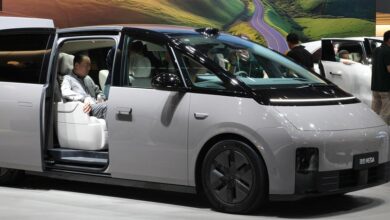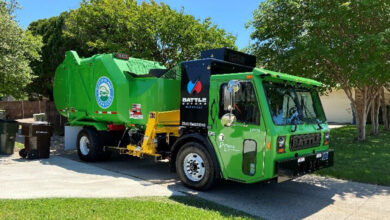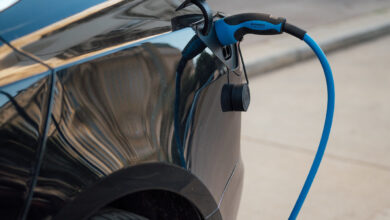The hottest EV stock in the U.S. isn’t Tesla or any familiar brand

Despite all the ambition to lead the global electric vehicle market, Tesla’s stock has lost 28.5% of its value since the beginning of the year and is now worth $556 billion. Rivian, the much-discussed electric SUV and commercial vehicle manufacturer, has lost 45.4% of its value this year and is worth $11.74 billion. Lucid has lost 34.2% and is worth $6.3 billion.
The situation for the traditional automakers producing not only electric vehicles is somewhat better: Stellantis, the parent company of Jeep and Chrysler, Fiat and Alfa Romeo, Peugeot, Citroen, and Opel, has fallen by 4.67% this year and is worth $64.4 billion. Ford has lost 0.1% since the beginning of the year and is worth $48.5 billion. General Motors has risen by 26.8% this year and is worth $52.16 billion.
Among the non-American manufacturers, Toyota has risen by 22.16% and is worth $50.84 billion. Volkswagen has dropped by a quarter percent since the beginning of the year and is worth $61.88 billion. Even the Chinese BYD, traded on the Shanghai Stock Exchange with a market value of $85 billion, has only increased by 23% since the beginning of the year.
But there’s one manufacturer that is schooling them all, even though it was founded back in 1932. Its stock has soared on Nasdaq by 114.2% since the beginning of the year and is traded at a valuation of $1.82 billion. This is Blue Bird, the largest yellow bus manufacturer in the U.S. from Georgia.
Due to the extensive geographical distribution of the U.S. on one hand, the struggling public transportation system, and the reliance on private vehicles on the other, the yellow bus is an American symbol, just like the eagle. Every day, about half a million such buses transport around 25 million students to school and back home. Each year, about 40,000 of these school buses of all sizes are sold in the U.S.
In recent years, this market has also begun a slow but sure transition to electric propulsion. Compared to the relatively limited range of electric buses, school buses do not travel long routes, and there is ample time to charge them overnight before morning routes and during the day before afternoon routes.
The U.S. Department of Energy allocated $5 billion to subsidize the purchase of electric yellow buses, which cost about $300,000 compared to about $100,000 for a diesel bus. However, in the long run, they are expected to recoup the investment not only through reduced environmental and human health damage costs from diesel buses but also through lower maintenance costs and the price gap between electricity and diesel.
Blue Bird already sells about 1,000 electric buses a year, generating revenues of $663 million and a net profit of $52.2 million. Unlike Tesla and other private electric vehicle manufacturers, its market is relatively stable, and its modest valuation is based on actual sales, not on hopes and trends like the large electric manufacturers whose valuations continue to be inflated relative to companies like Toyota and Volkswagen, which sell many more cars.
All three of its models, from the Micro Bird (10-30 passengers), through the Vision (36-77), to the All American, are offered in diesel, natural gas, and electric versions. The electric versions of the two larger models are equipped with a 155 kWh battery and have a range of 190-210 km per charge. This year, it produced more than 400 electric buses and has orders for another 500.
This is only 10% of the number of buses it produced in the same period, but according to estimates, the yellow bus market in the U.S. will grow from $2.4 billion to $3 billion by 2030, partly due to the increase in the sale of expensive electric buses.



